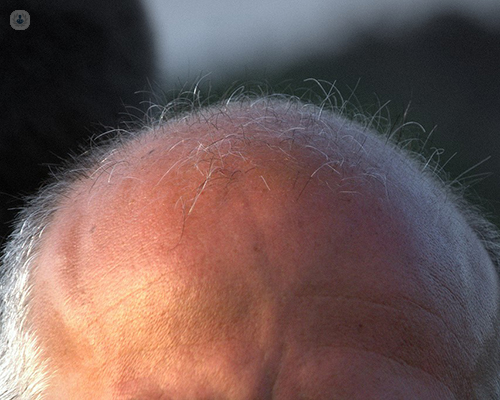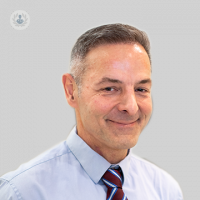Male pattern hair loss (MPHL) and male pattern baldness (MPB)
Written by:Male pattern hair loss and male pattern baldness affect a large portion of men and for some, it can be a distressing occurrence. Treatments are, however, available and it may be possible to stop and even reverse hair loss. Dr Aleksandar Godic, a highly experienced consultant dermatologist with a special interest in hair and scalp disorders, explains all.

What is male pattern hair loss?
Male pattern hair loss (MPHL) is the most common hair loss condition in men, which can lead to male pattern baldness (MPB) also called androgenetic alopecia. It is a genetic condition which causes the hair to thin and can eventually lead to just a horseshoe-like shape of hair around the sides and back of the head.
What are the signs and symptoms?
In some cases, men may notice excessive hair loss on the pillow, in the shower, in the plug hole or on the hands when styling their hair.
As the condition progresses, men may also notice a widening of the partition. In many cases, men do not recognise hair loss until it is in the advanced stages, which is often too late for a full recovery. This might be because the process is slow and goes unrecognised, or due to denial. At the other extreme, some men may worry about hair loss without reason.
What causes male pattern hair loss and male pattern baldness?
Male pattern hair loss and male pattern baldness are caused by a by-product of testosterone called dihydrotestosterone (DHT). This binds to hair follicles causing them to shrink, producing gradually thinner and thinner hair until baldness becomes apparent. The hair at the sides and the back remains because the follicles in these locations are not susceptible to DHT.
Recent research has also suggested that prostaglandins (PGs) have significant control over hair growth and different levels of certain types of PGs can contribute to the miniaturisation of hair follicles causing hair loss.
Can male pattern baldness be treated?
There are a number of products on the market that have no clinical efficacy and it’s therefore important to do some research before deciding how to treat hair loss. Hair loss can be treated with clinically proven medications, laser devices, and hair restoration surgery.
Finasteride and Minoxidil are two of the most commonly prescribed medications for hair loss treatment. Finasteride comes in tablet form and inhibits the ability to turn testosterone in DHT and thereby prevents follicles from shrinking. Minoxidil comes as a topical solution and blocks potassium channels and increases a specific type of PG. Aside from these, several off-label medications are efficient treatment options, such as Latanoprost, Spironolactone, and Alfatradiol.
Platelet-rich plasma (PRP), approved by the USA Food and Drug Administration, is another very promising option. Platelets are rich in growth factors and can be obtained from patient’s blood sample after centrifugation and are subsequently injected in the scalp, helping to prolong the active growth (anagen) phase of the hair cycle, promote the survival of hair follicles, and act as an anti-inflammatory that leads to an increase in hair density, diameter and quality. It has been established that PRP is superior to minoxidil and that it is safe (there is no rejection reaction), efficient and cost effective.
If you are worried about male pattern baldness or male pattern hair loss and wish to schedule a consultation with Dr Godic, you can schedule a consultation with him by visiting his Top Doctors profile.


